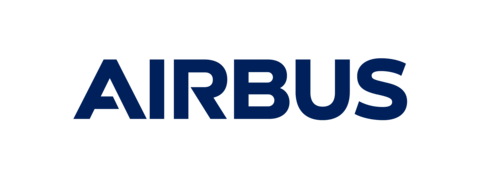Project description
AGORA Team project is made up of AIRBUS and FADA-CATEC and, at a high level, AGORA promotes the following:
-Industrial Research, facilitating collaboration between FADA-CATEC & AIRBUS to develop UAV Integration technologies in Airspace and Autonomy.
-It also promotes the Spanish Aeronautical Industry, this being a declared strategic Sector.
-It places ALTAS as a reference center and future Node of the “Digital European Sky Demonstrators” and makes it serve as a technological base as a U-Space SANDBOX. ATLAS is an experimental flight center located in Villacarrillo, Jaén.
-Finally, generates a high socioeconomic impact throughout the value chain.
In the context of the AGORA project, new technologies have been investigated for the safe and efficient management of unmanned aerial vehicle traffic in complex and highly densified scenarios in different use cases, including urban airspaces shared with manned traffic in a simulated manner.
The main objectives of AGORA are:
-A detailed analysis of different architectures for the implementation of the future European ecosystem for the management of U-space, evaluating them and choosing a prototype for subsequent development and implementation in the Cloud.
-The design and development of advanced U-space digital services to facilitate the integration of autonomous operations into the airspace and their interfaces with the UAS operator. We have based on the current regulation and in terms of research and development we have tried to go one step further compared with the current state of the art.
-The development of autonomous on-board functionalities by CATEC that allow the safe management of non-nominal and emergency situations in coordination with U-space air traffic management services.
-The implementation of the aforementioned U-space AIRBUS platform composed of a CISP and several USSPs with their different services, accessible by the UAS operator represented by FADA-CATEC with their different developments of its GCS.
-The validation of the developed technologies using hybrid simulation, which combines digital twins and real systems, for instance with drones integrated into traffic simulation environment

Timeline

Total project budget

Partners
CHALLENGE
UTM Architecture design and implementation with the development of U-space digital services to support advanced UAS operations with innovative onboard systems
By analysing the current state of the art, AGORA Team identified the need to research new concepts of Operations and architectures, taking into account the European Regulation and available standards to deploy the needed services for the UAS Operator to perform their operations in a safe way.
As no real services are currently existing in the U-space ecosystem because the novelty of the business, a digital twin has to be developed in order to test the effectiveness of all the solutions to be implemented not only in the U-space services, but also on the UAS on board, in this case coming from CATEC partner.
A CISP (Common Information Service Provider) shall be deployed, in addition to an USSP (U-space Service Provider) as required in the EU Regulation. To test the flight campaign results, several data analytics capabilities are needed in the platform to permit the analysis of simulated and real flights of the advanced systems onboarded in the UAVs.
The mentioned UAV onboard systems has to detect any obstacles during the flights (tactically) and permit the avoidance of the risk by automatically reconfiguring the flight intent, so the reserved volume is changed at the same time that the digital platform is aware of this situation and the system is warned by reserving and approving this new flight plan.
SOLUTION
U-space Digital Twin (Cloud based Digital Platform) to provide U-space services to UAS Operators
A Cloud based platform (U-space digital twin) was developed and deployed by Airbus AGORA Team, to provide the digital U-space services required in the current European regulation, adopting a federated architecture regarding the distribution of the mentioned services.
- Common Information Service Provider: This service was developed to provide geo awareness information, based on available standards (ED-269 and upscalable to ED-318)
- U-space Service Provider: This main actor of the U-space ecosystem was developed to provide flight authorisation service, Strategic conflict detection and resolution advanced services, conformance monitoring service (ex post), weather and terrain information proofs of concept, etc…
- Data analytics capabilities: permits analysis of simulated and real flights. The user is capable of retrieving and analysing the results of the experiments carried out during the flight campaigns and to measure the on board systems effectiveness.
- Flight Plans (U-plans) generator: as the platform is capable of receiving data from real flights, it was considered interesting to inject simulated flights to test the results of combining both of them in the different use cases. A random generator was developed to create the needed ones with the singularity of being able to configure randomly or in a fixed way the departure and landing points, number of flights, volume sizes, etc…
In addition, CATEC partner developed several on board systems to detect and avoid obstacles that could produce tactical conflicts, helping the operator avoid risks of collision and making their operations more efficient, as a 4D control was implemented.
BENEFITS
An integrated U-space Platform ready to test real and simulated flights
At the end of the project, AGORA Team has been solidly integrated as the UTM reference in the Spanish south area, working closely with the global Airbus UTM community and being selected to participate in new projects (SESAR 3)
AGORA U-space platform were able to test the real and simulated flights and the different use cases of the project, including the effectiveness of the onboard UAS systems. This platform is available in the selected architecture, so any test/use can be performed if the needed environment meets the current one.
A deeper knowledge of the Regulations and standards was acquired by the AGORA Team as the developed services were based on them. Conclusions and recommendations for regulations and standards are available as research results.
In addition to this mentioned capability, software development skills and UTM knowledge have been increased within the team members. It is also remarkable to mention that the project has been developed in AGILE methodology, stating the pillars for future projects and developments based on this unquestionable value-added methodology.
Partners

